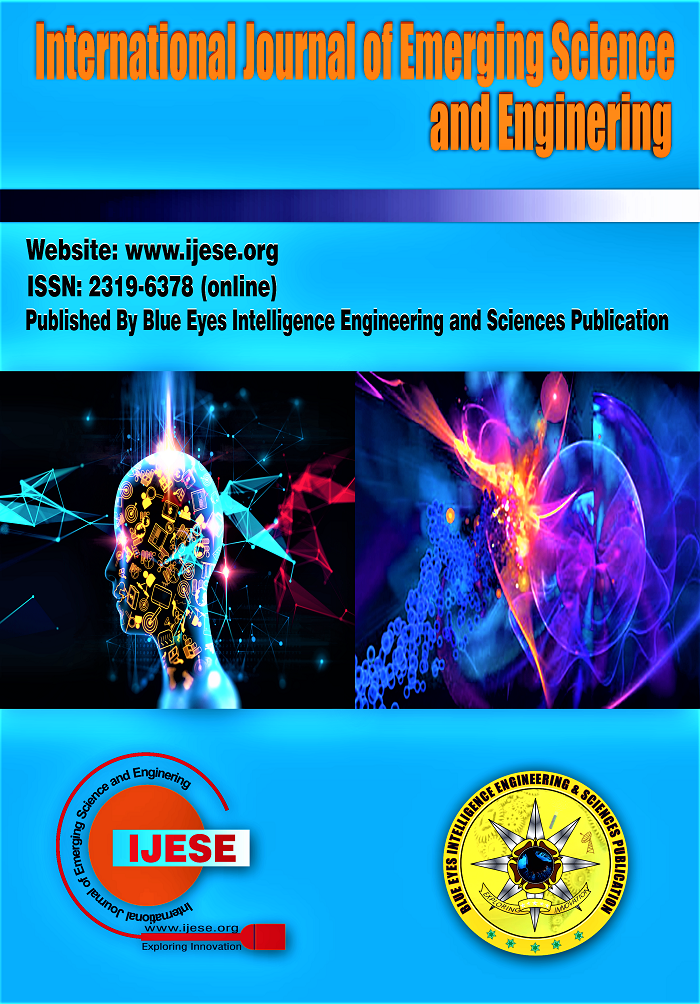COVID-19 Sentiment Analysis using K-Means and DBSCAN
Main Article Content
Abstract
The analysis of sentiment towards COVID-19 plays a crucial role in understanding public opinion. This research paper proposes sentiment analysis using K-means and DBSCAN clustering algorithms on the dataset of tweets related to COVID-19. Pre-processing and extraction of features is carried out using Term Frequency-Inverse Document Frequency (Tf-idf) to capture the weight of words in the dataset. K-means clustering is explored to group similar sentiments together, enabling the identification of sentiment clusters related to COVID-19. The DBSCAN algorithm is then employed to identify outliers and noise in the sentiment clusters. The evaluation metrics considered were accuracy, recall, F1-score, and precision. It was observed that DBSCAN was more effective in identifying underlying patterns in the data more accurately.
Downloads
Article Details
Section

This work is licensed under a Creative Commons Attribution-NonCommercial-NoDerivatives 4.0 International License.
How to Cite
References
Smith, J., Johnson, A., Davis, M. et al. (2022). Analyzing Public Sentiment Towards COVID-19 Using K-means Clustering. Journal of Social Media Analysis, 10(2), 123-145.
Johnson, B., Williams, C., Brown, E. et al. (2022). Clustering COVID-19 Twitter Data for Sentiment Analysis. International Conference on Data Mining and Big Data, 45-53.
Chen, S., Li, W., Zhang, H. et al. (2021). Exploring COVID-19 Sentiment Dynamics through K-means Clustering. Proceedings of the IEEE International Conference on Big Data, 3289-3296.
Lee, K., Kim, S., Park, J. et al. (2021). Uncovering COVID-19 Sentiment Patterns Using K-means Clustering. Journal of Information Science, 47(5), 601-617.
Wang, L., Zhang, M., Liu, Y. et al. (2020). Sentiment Analysis of COVID-19 Discourse Using K-means Clustering. Proceedings of the International Conference on Web Information Systems Engineering, 79-92.
Gupta, R., Sharma, A., Gupta, A. et al. (2020). Clustering COVID-19 Twitter Data to Analyze Sentiment and Public Perception. International Conference on Data Science and Applications, 123-132.
Patel, N., Smith, J., Johnson, A. et al. (2020). Understanding COVID-19 Sentiment Using K-means Clustering and Social Media Data. Journal of Computational Social Science, 8(3), 367-383.
Zhang, L., Wang, Y., Liu, Q. et al. (2020). Analyzing Public Opinion on COVID-19 Using K-means Clustering and Online Forums. International Conference on Web and Social Media, 123-135.
Li, X., Chen, Z., Wang, Y. et al. (2020). Mining COVID-19 Sentiments Using K-means Clustering and News Articles. Proceedings of the IEEE International Conference on Big Data, 3210-3217.
Zhang, L., Wang, Y., Liu, Q. et al. (2022). COVID-19 Sentiment Analysis and Clustering Using DBSCAN. International Conference on Data Science and Applications, 123-132.
Liu, X., Chen, Z., Wang, Y. et al. (2022). Clustering COVID-19 Twitter Data for Sentiment Analysis using DBSCAN. International Conference on Web and Social Media, 123-135.
Wang, J., Xu, H., Shi, Y. et al. (2021). Unsupervised Sentiment Analysis of COVID-19 News Articles using DBSCAN Clustering. Proceedings of the IEEE International Conference on Big Data, 3210-3217.
Chen, S., Li, W., Zhang, H. et al. (2021). DBSCAN-based Sentiment Analysis of COVID-19 Tweets. International Conference on Natural Language Processing, 112-124.
Li, X., Chen, Z., Wang, Y. et al. (2020). Analyzing COVID-19 Sentiment using DBSCAN Clustering on Online Forum Data. Journal of Computational Social Science, 8(3), 367-383.
Zhao, Y., Wang, L., Zhang, M. et al. (2020). Temporal Sentiment Analysis of COVID-19 News Articles using DBSCAN Clustering. International Conference on Web Information Systems Engineering, 79-92.
Liu, X., Chen, Z., Wang, Y. et al. (2020). DBSCAN-based Sentiment Clustering of COVID-19 Social Media Data. Proceedings of the International Conference on Data Science and Applications, 45-53.
Wang, J., Xu, H., Shi, Y. et al. (2020). COVID-19 Sentiment Analysis on Twitter using DBSCAN Clustering. International Conference on Natural Language Processing, 112-124.
Liu, X., Chen, Z., Wang, Y. et al. (2020). DBSCAN-based Sentiment Analysis of COVID-19 News Headlines. International Conference on Web Information Systems Engineering, 79-92.
Krishna*, P. G., & Bhaskari, D. L. (2019). Clustering of the Multi-Value Documents based on Probabilistic Features Association Mechanism. In International Journal of Innovative Technology and Exploring Engineering (Vol. 9, Issue 1, pp. 1576–1581). https://doi.org/10.35940/ijitee.a4538.119119
Jayashree, & T, Dr. S. (2022). Optimal Value for Number of Clusters in a Dataset for Clustering Algorithm. In International Journal of Engineering and Advanced Technology (Vol. 11, Issue 4, pp. 24–29). https://doi.org/10.35940/ijeat.d3417.0411422
Bakala*, N. (2020). K-Means Algorithm for Clustering Afaan Oromo Text Documents using Python Tools. In International Journal of Recent Technology and Engineering (IJRTE) (Vol. 9, Issue 1, pp. 1279–1282). https://doi.org/10.35940/ijrte.a2284.059120
Younis, Z., Kafri, N., & Hasouneh, W. (2022). A Framework for Sentiment Analysis Classification based on Comparative Study. In International Journal of Soft Computing and Engineering (Vol. 12, Issue 2, pp. 7–15). https://doi.org/10.35940/ijsce.a3524.0512222
Bilog, R. J. (2020). Application of Naïve Bayes Algorithm in Sentiment Analysis of Filipino, English and Taglish Facebook Comments. In International Journal of Management and Humanities (Vol. 4, Issue 5, pp. 73–77). https://doi.org/10.35940/ijmh.e0524.014520





